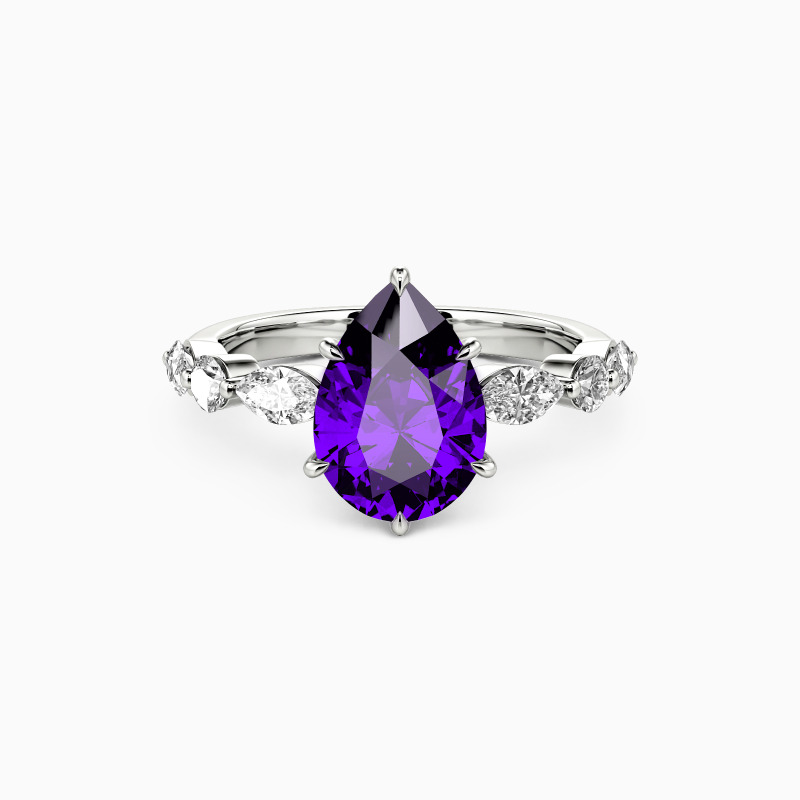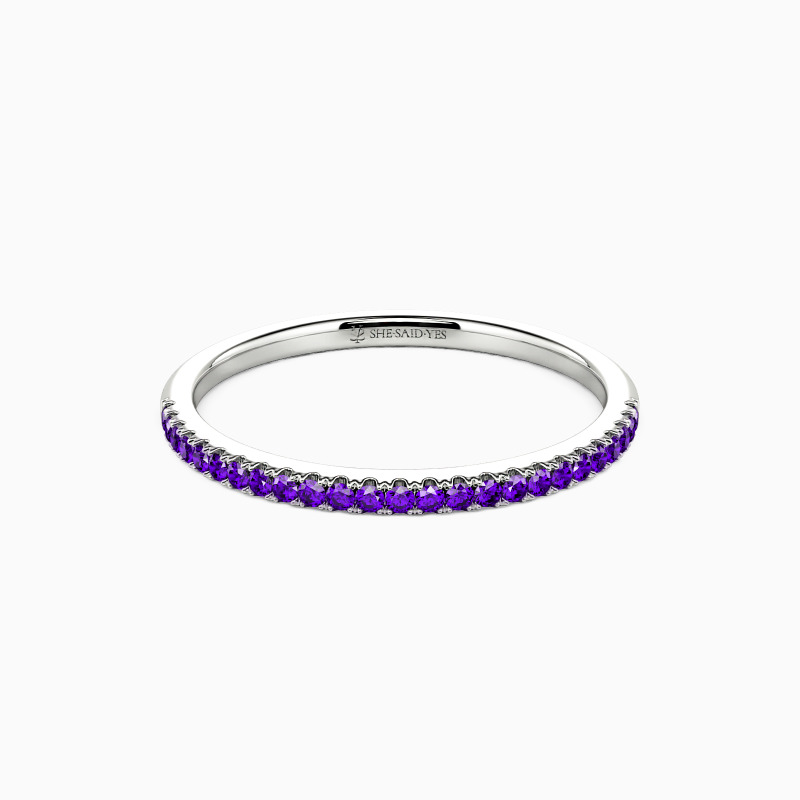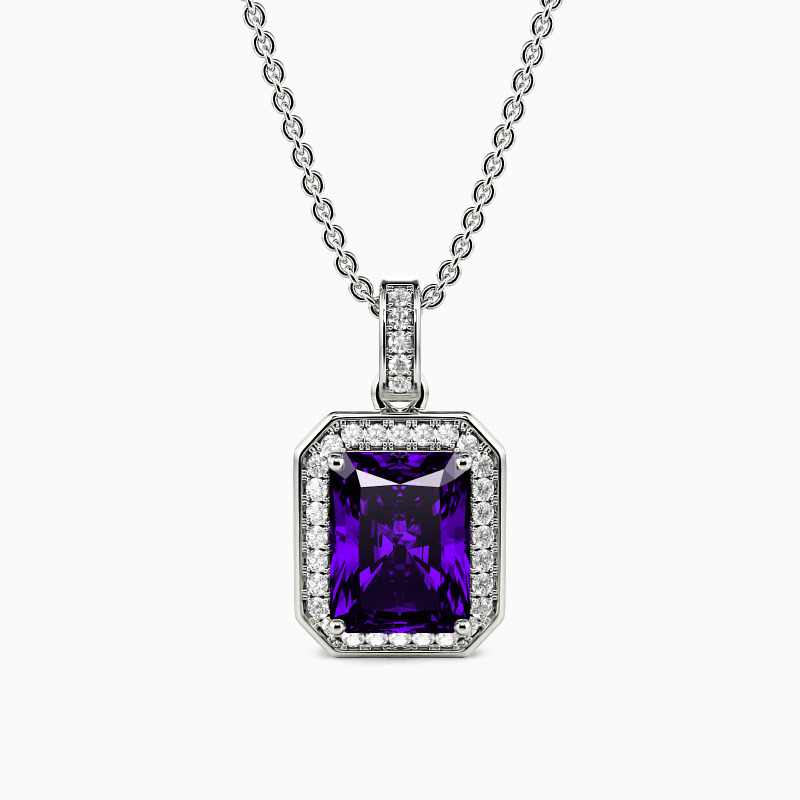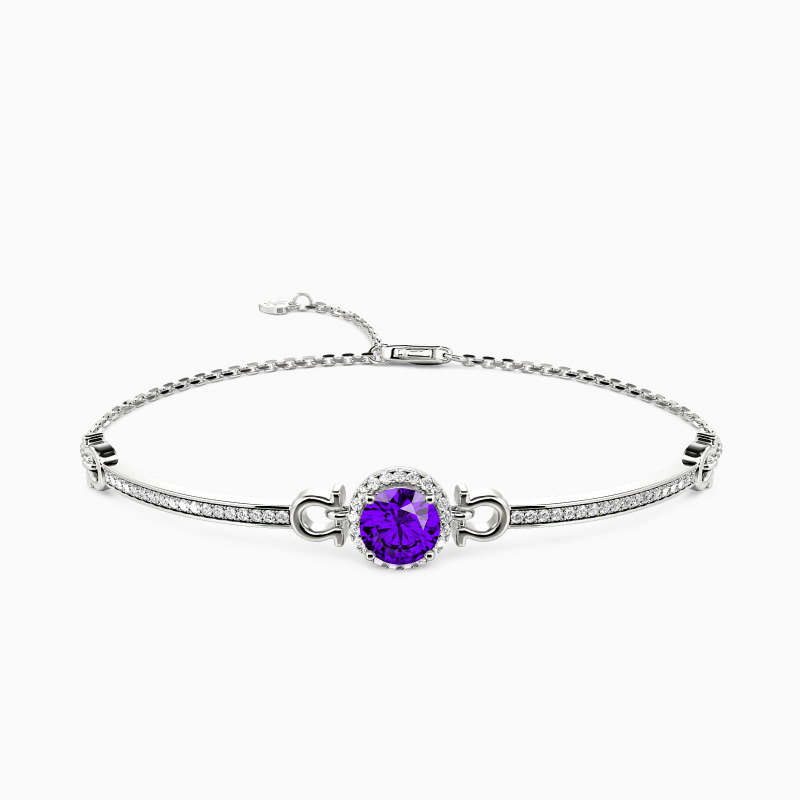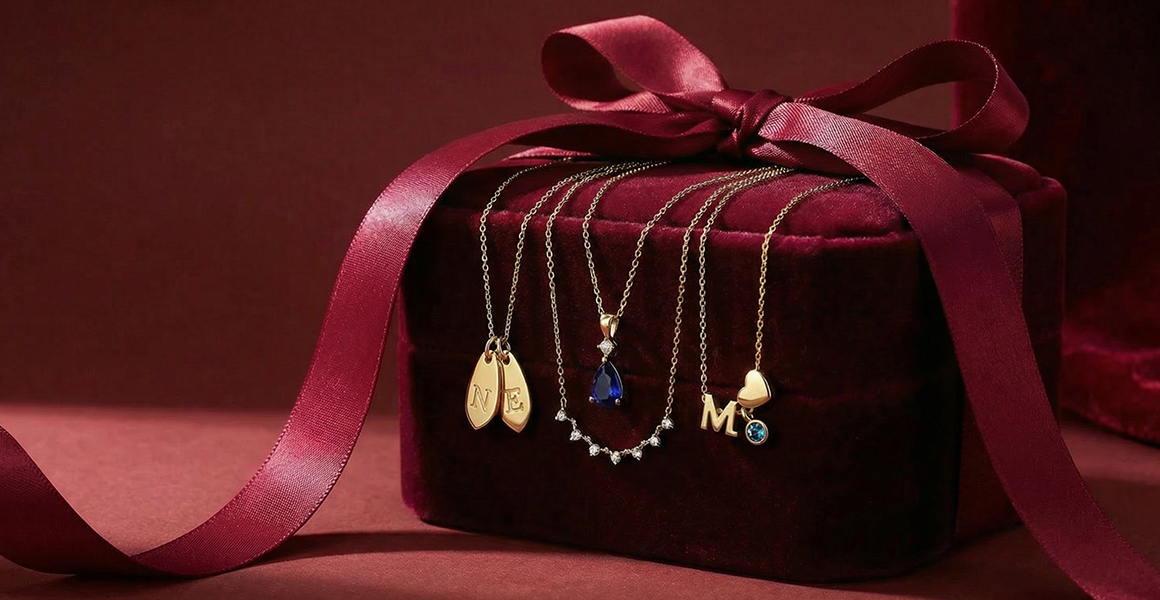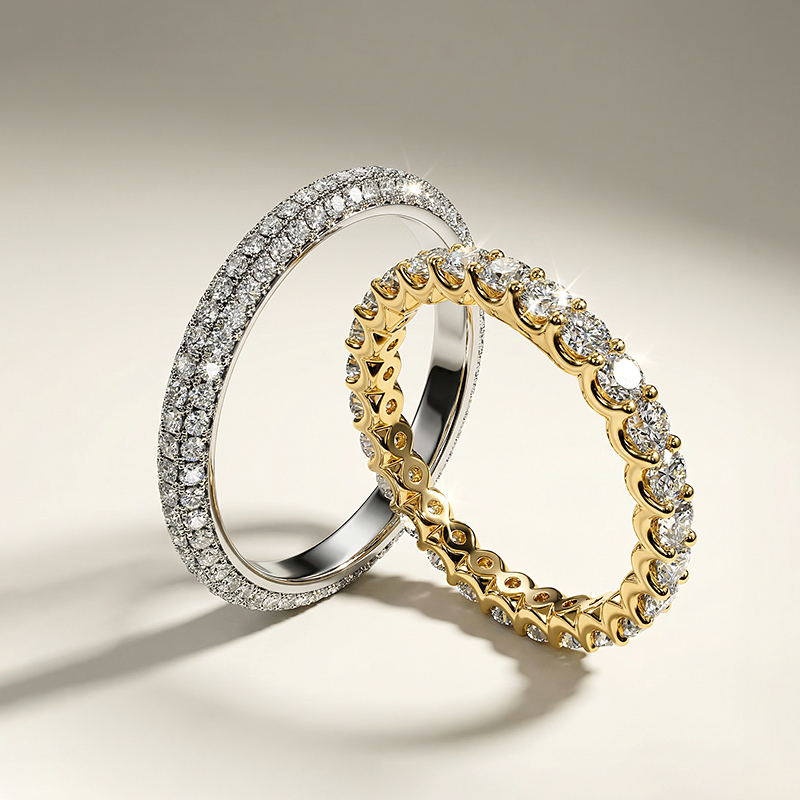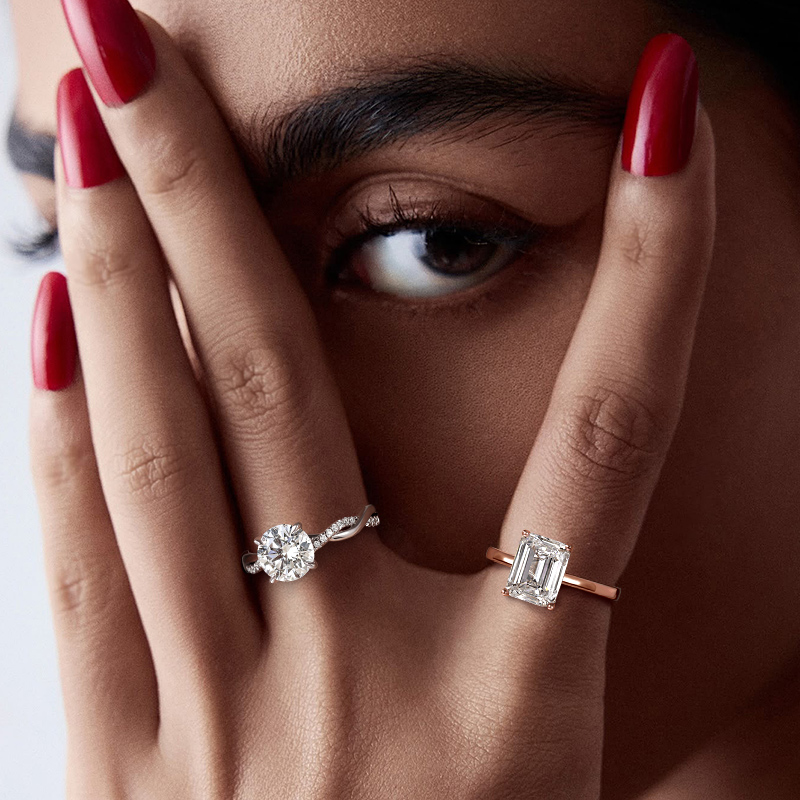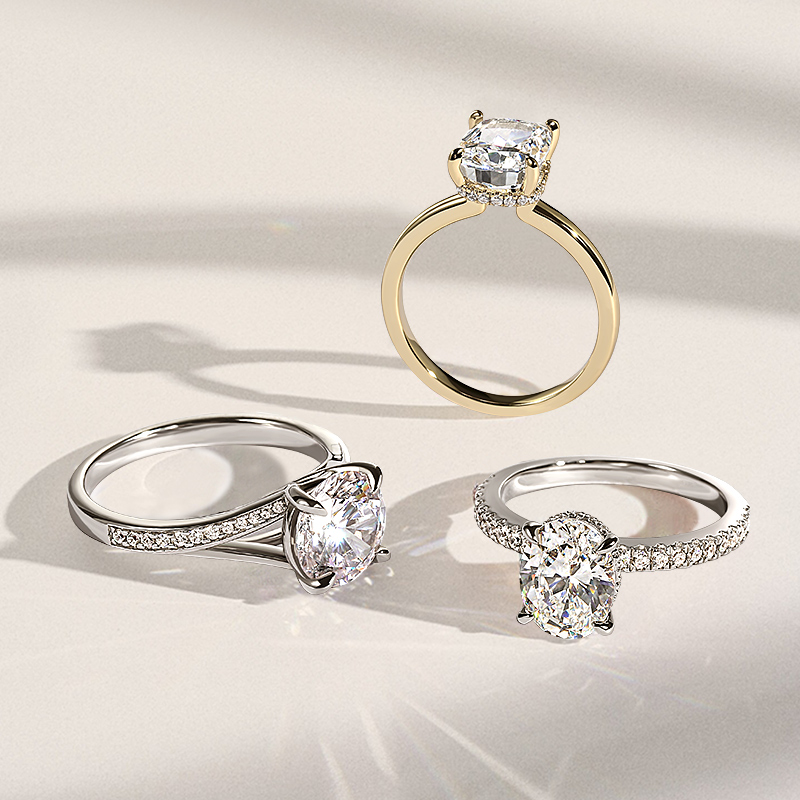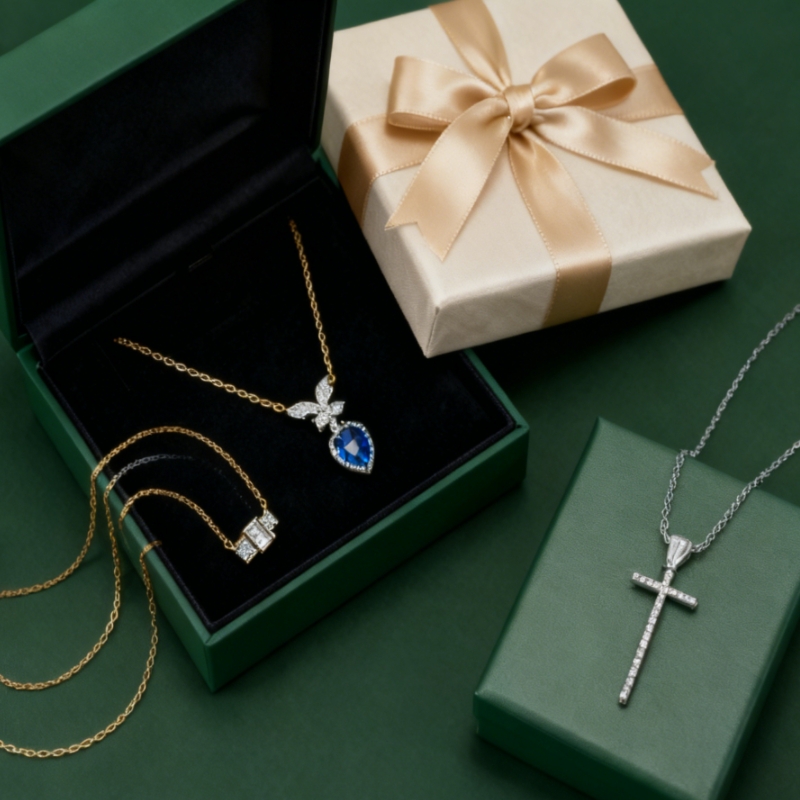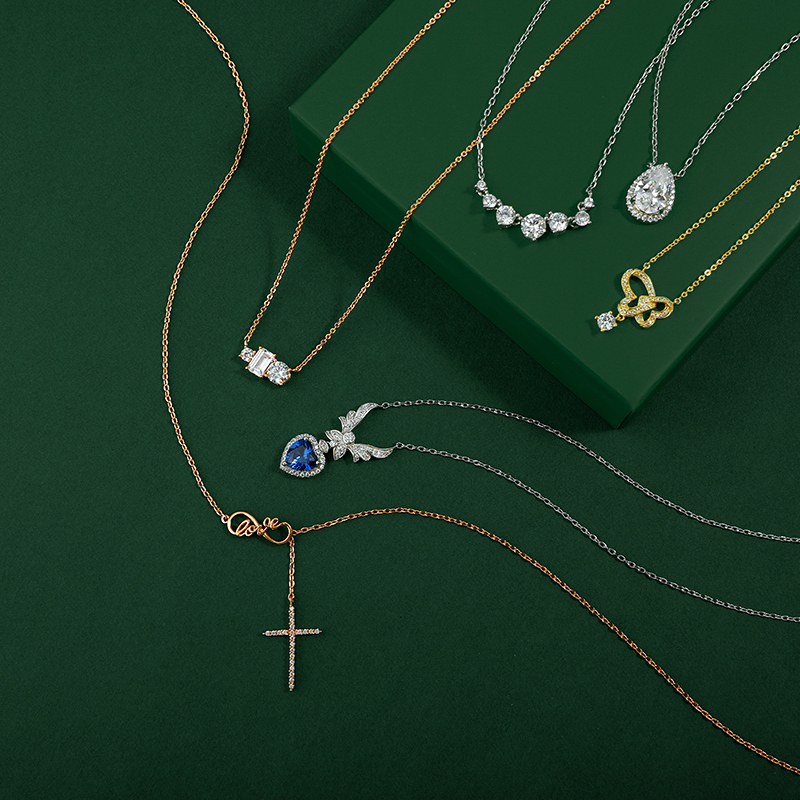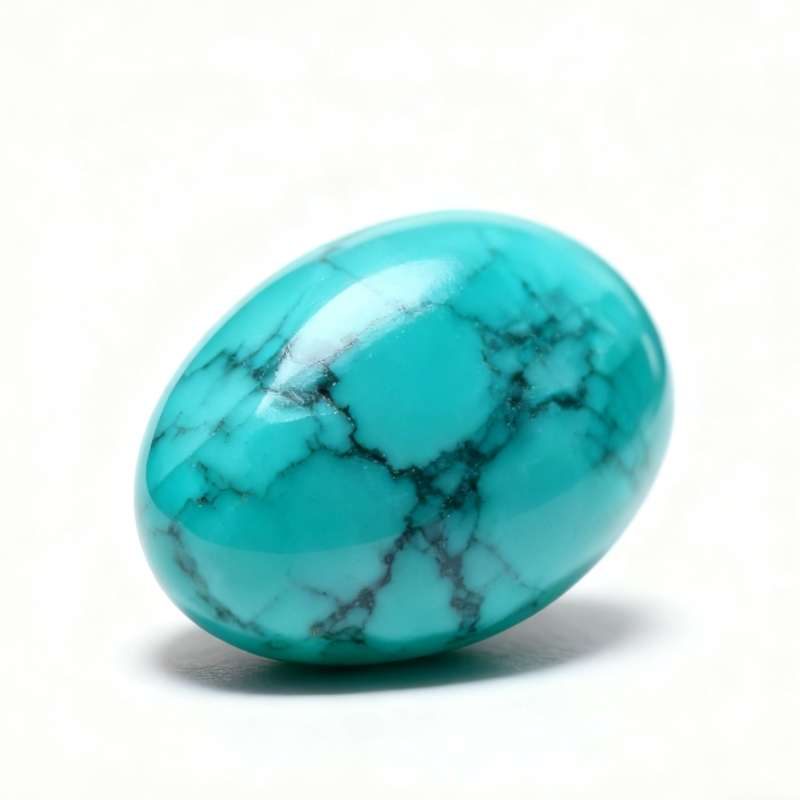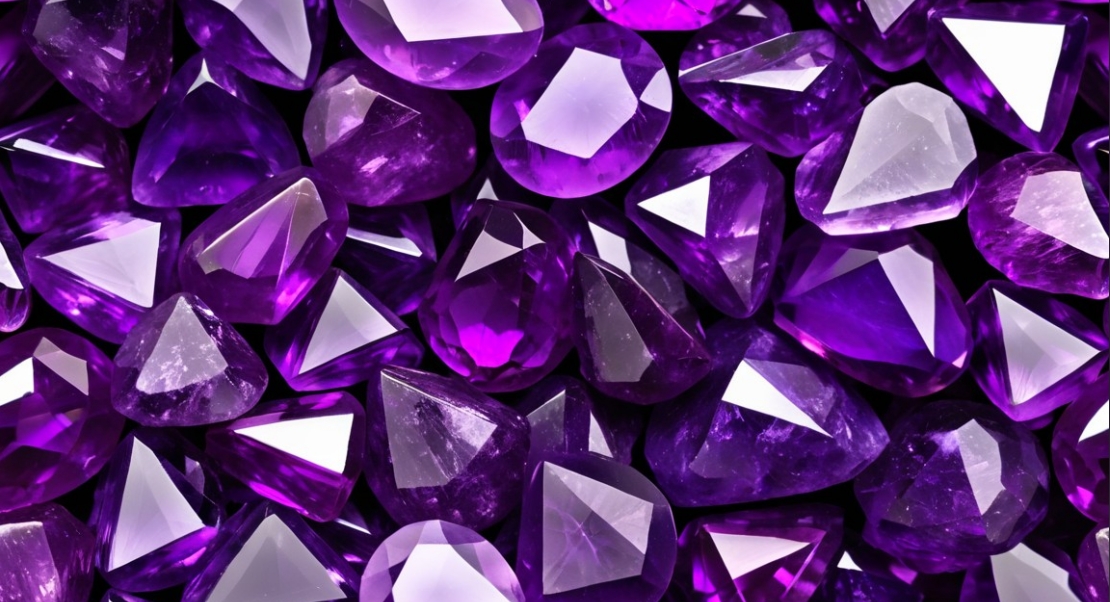
Amethyst crystals are some of the most enchanting and recognizable gemstones in the world, instantly calling to mind deep purple elegance and timeless beauty. More than just a decorative stone, amethyst resides where geology, spirituality, and jewelry design converge. Its story brings together natural wonder, cultural symbolism, and enduring relevance.
In this guide, we will explore amethyst crystals in detail. From their geological origins and history to their healing properties and jewelry care tips, this article will help you understand why Amethyst continues to be one of the most beloved gemstones worldwide.
What Are Amethyst Crystals?
Amethyst is a violet to deep purple variety of quartz (silicon dioxide, SiO₂). Its signature color comes from trace iron impurities combined with natural irradiation during crystal growth. Structurally, Amethyst belongs to the trigonal crystal system and holds a 7 out of 10 on the Mohs hardness scale, making it durable enough for everyday jewelry while maintaining its captivating beauty.
Historically, Amethyst was once considered as valuable as diamonds, rubies, and emeralds. However, with the discovery of abundant deposits in Brazil and other regions, its classification shifted into the semi-precious category. Despite this change, Amethyst remains highly desirable for its beauty, accessibility, and meaning.
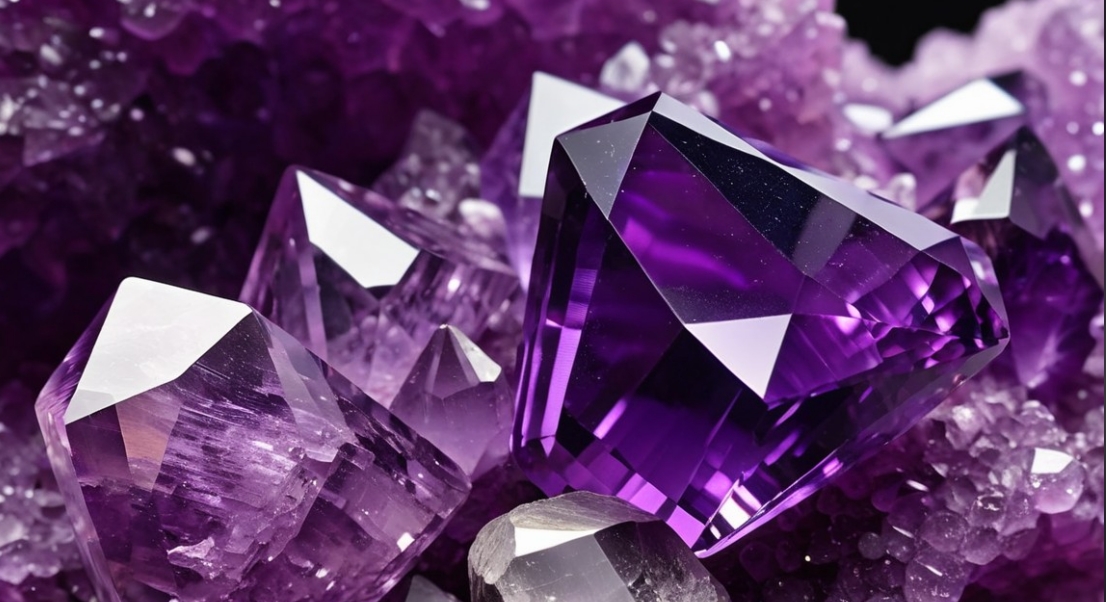
Geological Origins & Major Sources
Amethyst usually forms inside volcanic rock cavities known as geodes. When silica-rich fluids seep into these hollow pockets, trace amounts of iron mix with the quartz structure. Over time, natural radiation alters the iron’s oxidation state, creating Amethyst’s characteristic purple hue.
Key global sources include:
- Brazil & Uruguay – Famous for cathedral geodes and vivid purple crystals.
- Zambia – Known for cooler violet-blue tones.
- Siberia (Russia) – Historically prized for its deep purples with red flashes.
- United States & Canada – Thunder Bay (Canada), Arizona, and North Carolina provide unique deposits.
Each region contributes distinctive qualities, giving collectors and designers a rich palette of Amethyst varieties to choose from.
History, Legends & Cultural Symbolism
Ancient Greek Legends
The word “Amethyst” comes from the Greek amethystos, meaning “not intoxicated.” Ancient Greeks believed that wearing or drinking from Amethyst goblets would prevent drunkenness. In one myth, the god of wine, Dionysus, transformed a maiden named Amethystos into a crystal, symbolizing protection and clarity.
Medieval & Modern Symbolism
During the Middle Ages, bishops wore Amethyst rings as symbols of piety and spiritual authority. Royal families admired the stone for its regal purple color, often associating it with wisdom, humility, and divine protection.
Today, Amethyst continues to symbolize peace, balance, and clarity. Many people still keep Amethyst crystals in their homes or wear them as jewelry, appreciating both their aesthetic appeal and spiritual meaning.
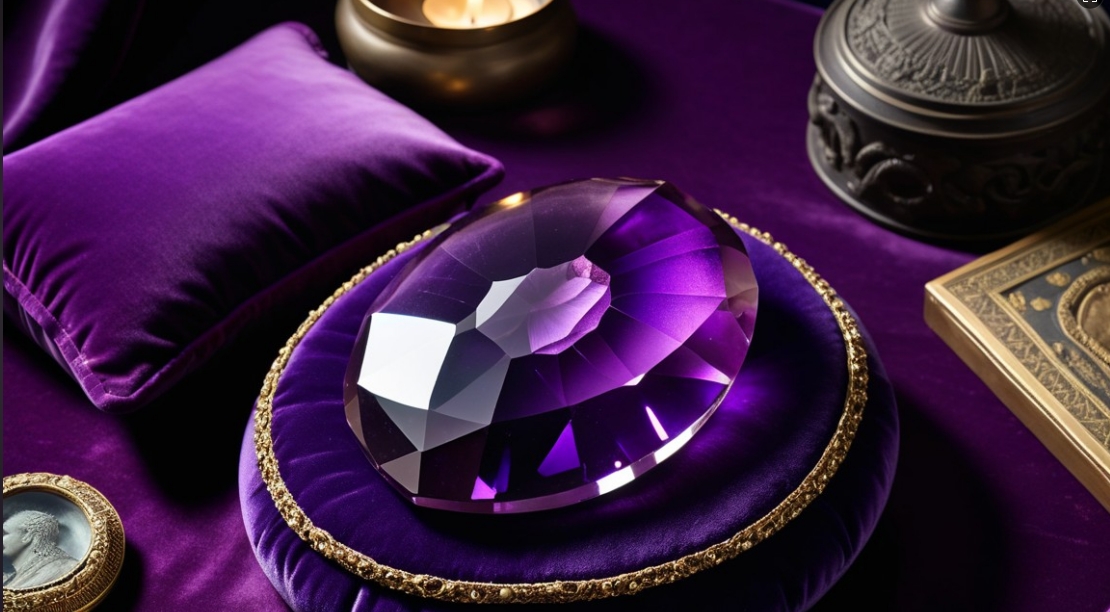
Physical Attributes: Color, Quality & Value Factors
Color & Clarity
Amethyst color ranges from light lilac (known as “Rose de France”) to deep, saturated purples with blue or red undertones. Stones with uniform color distribution and high clarity are the most valuable.
Hardness & Durability
With a Mohs hardness of 7, Amethyst resists scratches and holds up well in rings, pendants, and earrings. However, like all gemstones, it should be protected from sharp blows and harsh chemicals.
Value Determinants
Unlike diamonds, Amethyst’s value depends mainly on its color intensity and uniformity, not carat weight. Deep purples with slight red or blue flashes are prized, while lighter stones are more affordable. Heat treatment is also common—sometimes used to transform Amethyst into golden Citrine. Reputable sellers will disclose such treatments.
Spiritual & Healing Properties
Beyond its physical beauty, Amethyst is one of the most cherished crystals in holistic healing. Many people turn to Amethyst for its calming energy, spiritual symbolism, and metaphysical benefits.
Key Amethyst healing properties include:
- Emotional Balance: Said to reduce stress, ease anxiety, and encourage restful sleep.
- Mental Clarity: Linked to the crown and third-eye chakras, Amethyst enhances intuition, focus, and spiritual awareness.
- Protection: Believed to shield against negativity and emotional imbalances.
- Creativity & Peace: Encourages inspiration while grounding the mind in inner calm.
Whether used in meditation, placed in a room, or worn as jewelry, Amethyst crystals remain a favorite among spiritual practitioners worldwide.
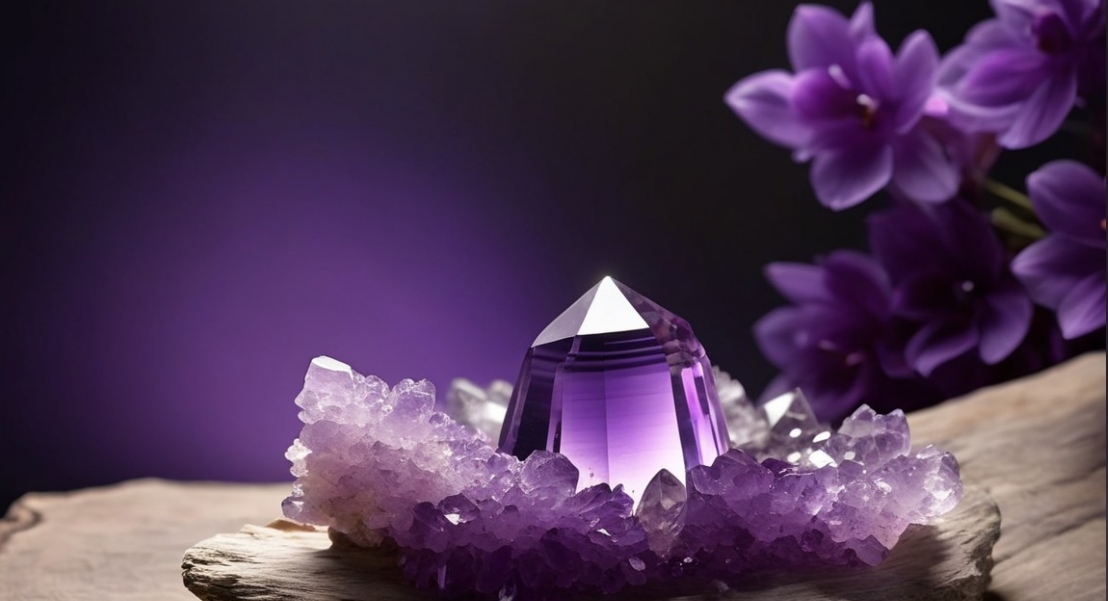
Practical Recommendations: Use, Care, and Wearing Tips
Jewelry Design & Symbolism
As February’s birthstone and the traditional 6th wedding anniversary gift, Amethyst carries both personal and cultural significance. Its versatility makes it perfect for rings, pendants, earrings, and bracelets, offering timeless elegance in every form.
Caring for Amethyst
- Cleaning: Use mild soap and warm water; avoid ultrasonic cleaners and steam.
- Storage: Store separately from harder gemstones like diamonds and sapphires.
- Sunlight Exposure: Limit prolonged exposure to direct sunlight, as UV rays can cause fading.
Home & Decorative Use
Amethyst geodes and clusters often serve as decorative centerpieces in living rooms, bedrooms, and meditation spaces. Besides their visual appeal, many believe they infuse calm, balance, and healing energy into the environment.
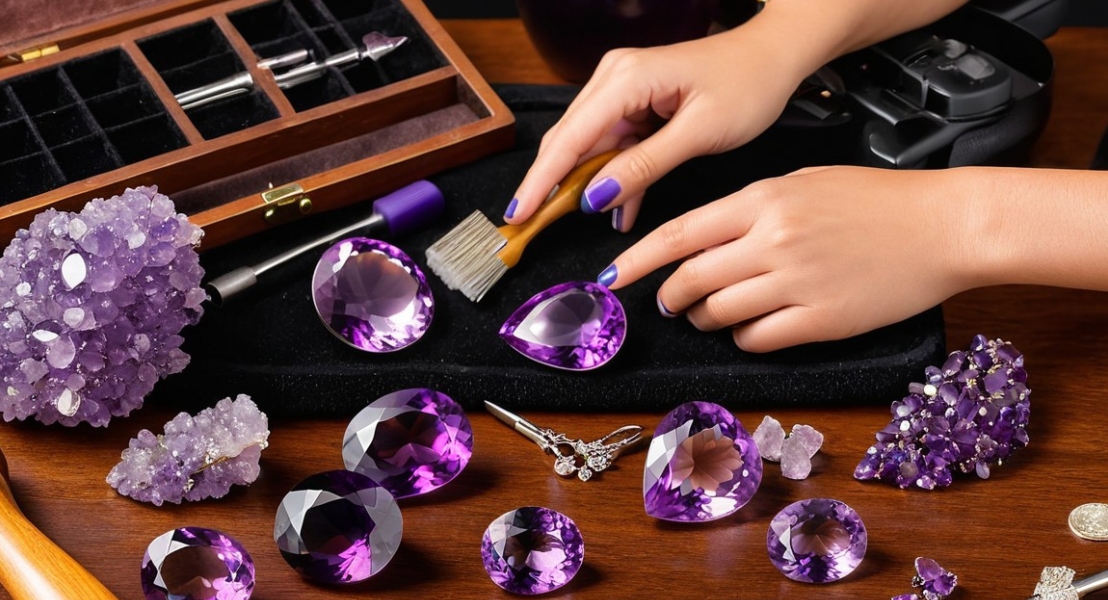
Conclusion:
From its origins in volcanic geodes to its place in mythology, spirituality, and jewelry, Amethyst crystals embody beauty, durability, and meaning. Their balance of accessibility and elegance makes them one of the most versatile gemstones available. Whether admired as a geological marvel, a spiritual healing tool, or a luxurious jewelry stone, Amethyst continues to inspire collectors, healers, and jewelry enthusiasts around the world. Explore more gemstones and their unique meanings.
Frequently Asked Questions About Amethyst Crystals
Q1: Does Amethyst Fade Over Time?
Yes. Long-term exposure to direct sunlight or high heat can cause Amethyst to fade. Keep it stored in shaded areas or jewelry boxes to preserve its rich color.
Q2: Is Amethyst Suitable for Everyday Wear?
Yes. With a Mohs hardness of 7, Amethyst works well for daily jewelry, including rings and pendants. However, avoid strong chemicals and rough handling.
Q3: How Can I Tell if My Amethyst is Genuine?
Natural Amethyst often shows slight zoning or variations in color, while synthetic versions usually look uniformly perfect. Purchasing from reputable jewelers or requesting a gemological certificate ensures authenticity.
Q4: Amethyst vs Citrine — What’s the Difference?
Both are quartz varieties. Amethyst is purple, while Citrine ranges from yellow to orange. Interestingly, some Citrine comes from heat-treated Amethyst, which makes Amethyst vs Citrine a common discussion in the gem trade.
Q5: What Does Amethyst Symbolize Spiritually?
Amethyst represents peace, clarity, and protection. Many use it in meditation practices, believing it enhances spiritual awareness and shields against negative energy.
Explore some of our top collection of Amethyst jewelry:

